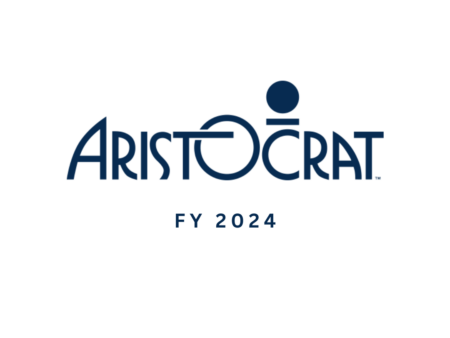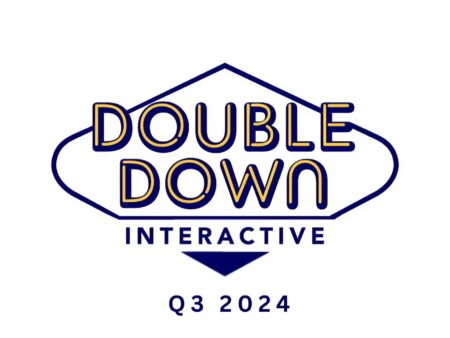The National Indian Gaming Commission (NIGC) has announced a record-breaking gross gaming revenue (GGR) of $41.9 billion for the fiscal year 2023 (FY23). This impressive figure marks a 2.4% increase from the previous fiscal year’s GGR of $40.9 billion, reflecting the robust growth and resilience of the tribal gaming industry.
Key Announcements and Leadership Insights
The announcement was made by Chairwoman Sharon M. Avery and Vice Chair Jeannie Hovland during the Wisconsin Gaming Regulators Association Summer Conference held in Green Bay, Wisconsin. Chairwoman Avery highlighted the significance of this achievement, stating, “This year’s GGR results demonstrate how a strong regulatory framework and diversity of tribal gaming enterprises generate growth in the gaming industry. Again, this year, tribal gaming operators and regulators have proven that their ingenuity and tenacity are catalysts for growth, even in the face of an ever-changing gaming landscape.”
Consistent Growth Across All Regions
The NIGC report indicates that all eight NIGC regions experienced growth in FY23 compared to the previous fiscal year. This trend of increasing revenues underscores the resilience and adaptability of tribal gaming operations nationwide.
Breakdown of Regional Growth
- Sacramento Region: Led the nation in revenue generation, showcasing strong performances from major casinos in California and Northern Nevada.
- Washington D.C. Region: Saw significant growth with contributions from states like Florida and North Carolina, driven by increased gaming activities and expansions.
- Phoenix Region: Continued to thrive with new developments and enhanced amenities in Arizona and New Mexico, attracting more visitors and generating higher revenues.
Historical Context and Recovery Trends
The FY23 GGR of $41.9 billion is part of a broader trend of growth in recent years. The tribal gaming industry has shown remarkable resilience, recovering strongly from the significant decline in 2020 due to the COVID-19 pandemic. During the pandemic, GGR fell to $27.8 billion. However, the industry bounced back to $39.0 billion in 2021 and $40.9 billion in 2022.
These figures were derived from the independently audited financial statements of 519 gaming operations owned by 244 federally recognized tribes in 29 states. This robust recovery highlights the effective management and strategic initiatives undertaken by tribal gaming operations.
Leadership Changes and Their Impact
The NIGC has also seen significant changes in its leadership. In January 2023, Michael Hoenig, the agency’s longest-serving General Counsel, departed. During his tenure, Hoenig played a crucial role in regulatory advancements and responses to emerging issues such as the expansion of sports betting and new cyber threats. His contributions have been pivotal in shaping the regulatory landscape and ensuring the industry’s stability and growth.
Factors Driving the Growth of Tribal Gaming
Several key factors have contributed to the continued growth of tribal gaming revenues:
Technological Innovations
- Advanced Gaming Systems: Many tribal gaming facilities have upgraded their gaming systems to offer cutting-edge experiences, including digital and interactive games that attract a broad audience.
- Online and Mobile Gaming: The adoption of online and mobile gaming platforms has significantly expanded the reach of tribal gaming, appealing to younger demographics and providing convenience for players.
Strategic Marketing and Promotions
- Targeted Campaigns: Effective marketing campaigns aimed at both local and international audiences have successfully driven traffic to gaming establishments.
- Enhanced Loyalty Programs: Comprehensive loyalty programs have encouraged repeat visits and sustained engagement from frequent players.
Regulatory Framework and Oversight
A strong regulatory framework has been crucial in ensuring the integrity and sustainability of the tribal gaming industry. The NIGC’s oversight and support have enabled tribal gaming operations to navigate challenges and capitalize on opportunities for growth.
Future Prospects for the Tribal Gaming Industry
The future looks promising for the tribal gaming industry, with several initiatives and projects on the horizon:
- Expansion Projects: Many tribes are planning new casino developments and expansions, which are expected to contribute significantly to future GGR.
- Sustainable Practices: Emphasis on sustainable and eco-friendly practices will ensure long-term operational success and community benefits.
- Cultural Integration: Continued integration of cultural elements into gaming facilities will offer unique experiences and preserve tribal heritage.
Conclusion: The Report
The National Indian Gaming Commission’s report of $41.9 billion in GGR for FY23 is a testament to the strength and resilience of the tribal gaming industry. This achievement underscores the importance of Indian gaming as a vital economic driver for tribal communities. Through strategic initiatives, technological advancements, and effective marketing, the industry has not only recovered from the pandemic but also set new benchmarks for success. As we look to the future, the continued expansion and innovation within Indian gaming promise even greater contributions to tribal economies and the broader gaming landscape.
FAQs About National Indian Gaming Commission’s FY23 Gross Gaming Revenue Report
1. What is the National Indian Gaming Commission (NIGC)?
The National Indian Gaming Commission (NIGC) is a federal regulatory agency responsible for overseeing and regulating gaming activities on Indian lands in the United States. The NIGC ensures that gaming operations are conducted fairly and in compliance with federal laws and regulations.
2. What is Gross Gaming Revenue (GGR)?
Gross Gaming Revenue (GGR) is the total amount of money wagered by players minus the winnings paid out to them. It represents the total income generated by gaming operations before deducting expenses.
3. How much was the GGR for FY23?
The NIGC reported a record-breaking GGR of $41.9 billion for the fiscal year 2023.
4. How does the FY23 GGR compare to previous years?
The FY23 GGR of $41.9 billion represents a 2.4% increase from the FY22 GGR of $40.9 billion. This continues the trend of growth seen in recent years, with FY21 recording $39.0 billion and FY20 experiencing a decline to $27.8 billion due to the COVID-19 pandemic.
5. Which regions showed growth in FY23?
All eight NIGC regions experienced growth in FY23 compared to the previous fiscal year. Notable regions include, Sacramento Region, Washington D.C. Region, and Phoenix Region.
6. What factors contributed to the growth in GGR?
Several factors contributed to the growth in GGR, including Technological Innovations, Strategic Marketing and Promotions, and Strong Regulatory Framework.
7. Who made the announcement of the FY23 GGR?
The announcement was made by Chairwoman Sharon M. Avery and Vice Chair Jeannie Hovland during the Wisconsin Gaming Regulators Association Summer Conference in Green Bay, Wisconsin.
8. What did Chairwoman Avery say about the FY23 GGR results?
Chairwoman Avery stated, “This year’s GGR results demonstrate how a strong regulatory framework and diversity of tribal gaming enterprises generate growth in the gaming industry. Again, this year, tribal gaming operators and regulators have proven that their ingenuity and tenacity are catalysts for growth, even in the face of an ever-changing gaming landscape.”
9. How many gaming operations and tribes were included in the FY23 report?
The FY23 GGR figures were derived from the independently audited financial statements of 519 gaming operations owned by 244 federally recognized tribes in 29 states.
10. What changes occurred in the NIGC leadership in FY23?
In January 2023, Michael Hoenig, the agency’s longest-serving General Counsel, departed. During his tenure, he played a key role in regulatory advancements and responses to emerging issues such as the expansion of sports betting and new cyber threats.
11. What are the future prospects for the tribal gaming industry?
The future looks promising with several initiatives and projects on the horizon, including Expansion Projects, Sustainable Practices, and Cultural Integration.


















